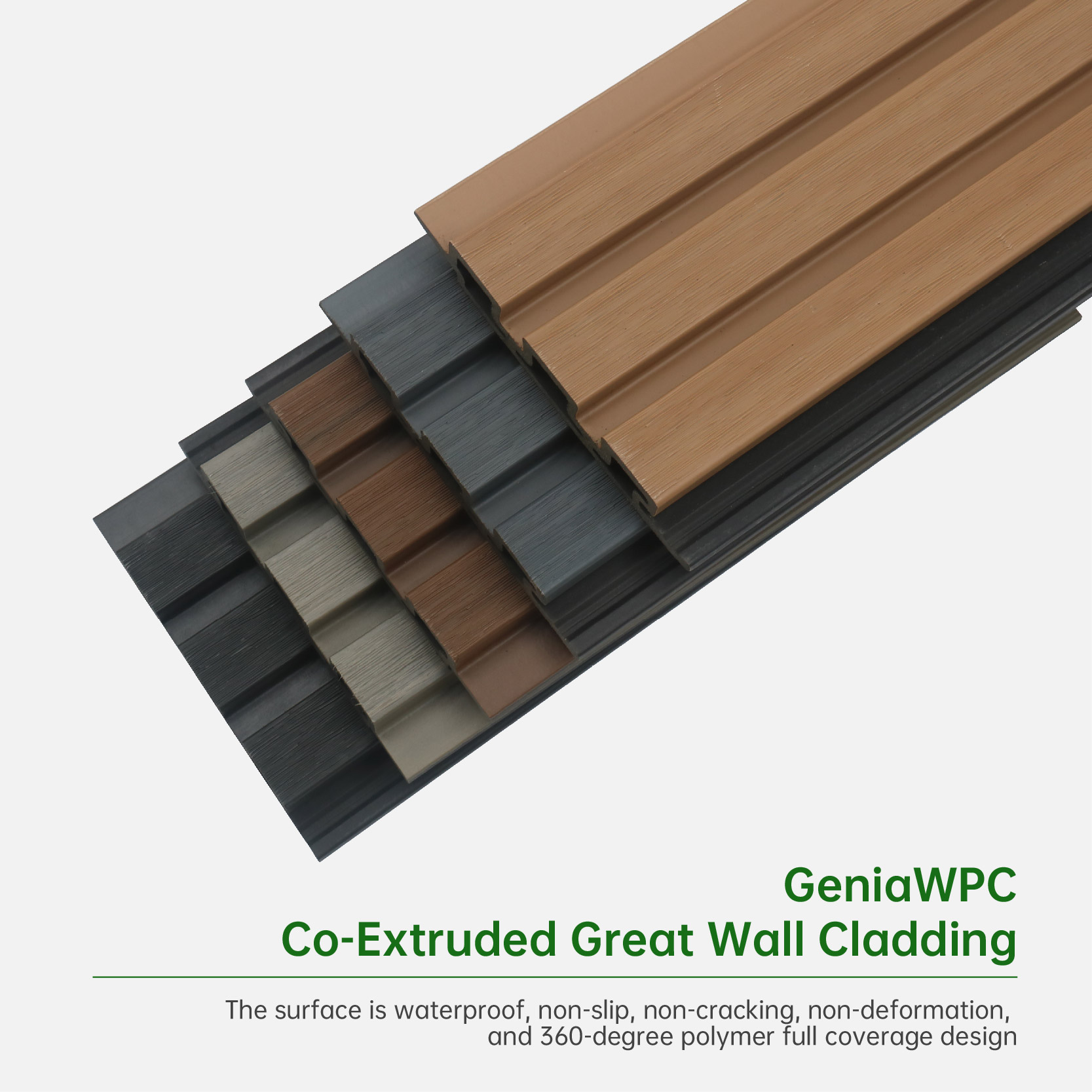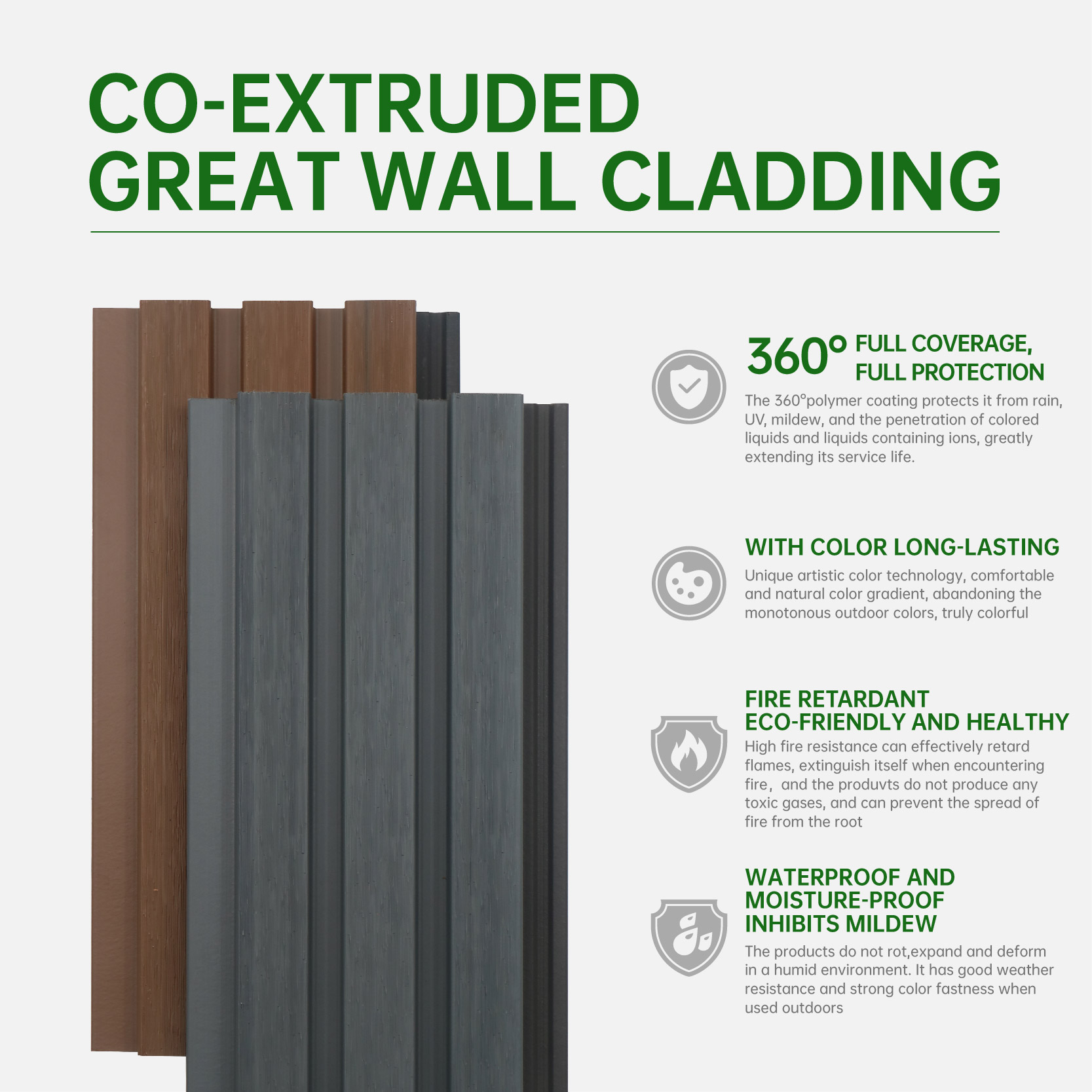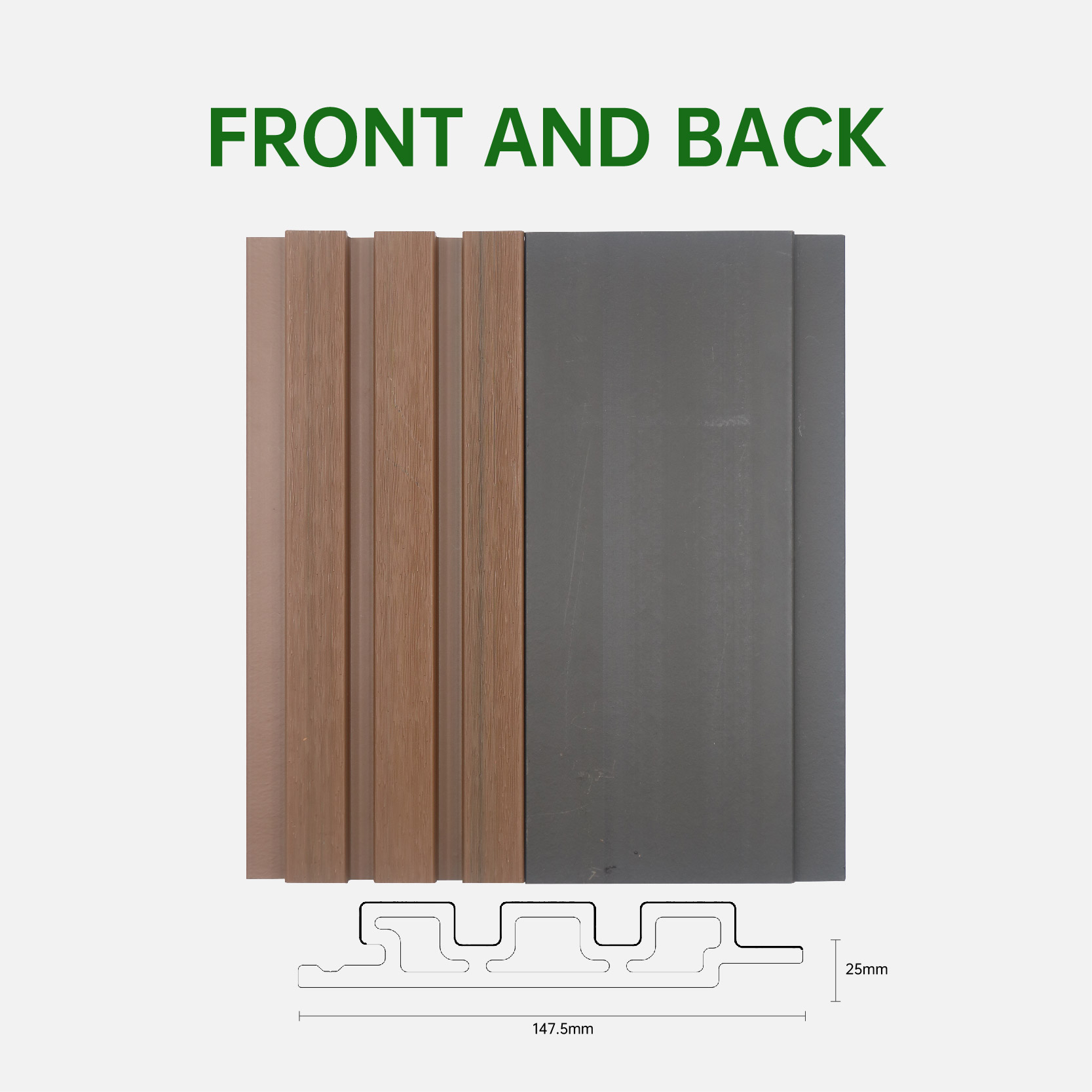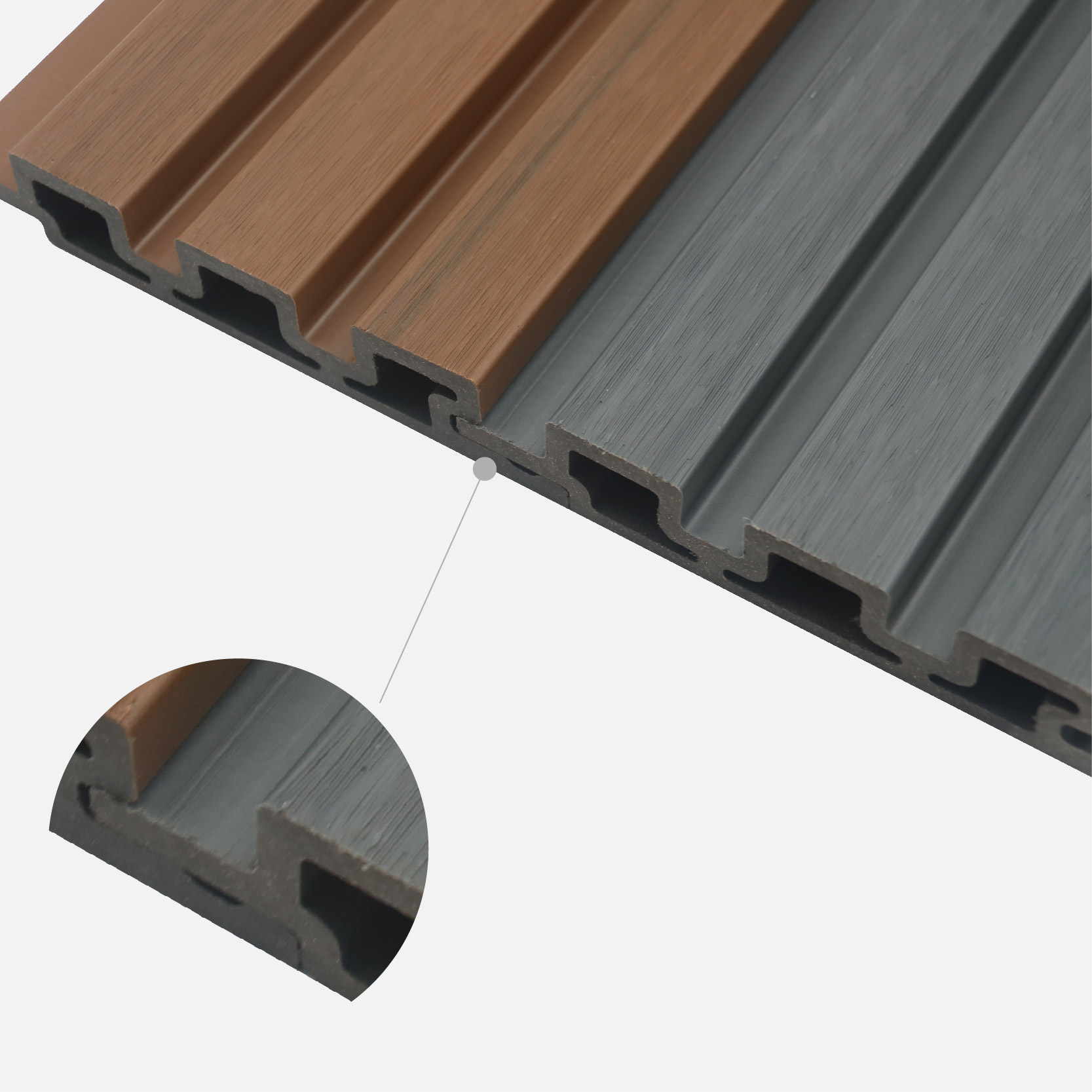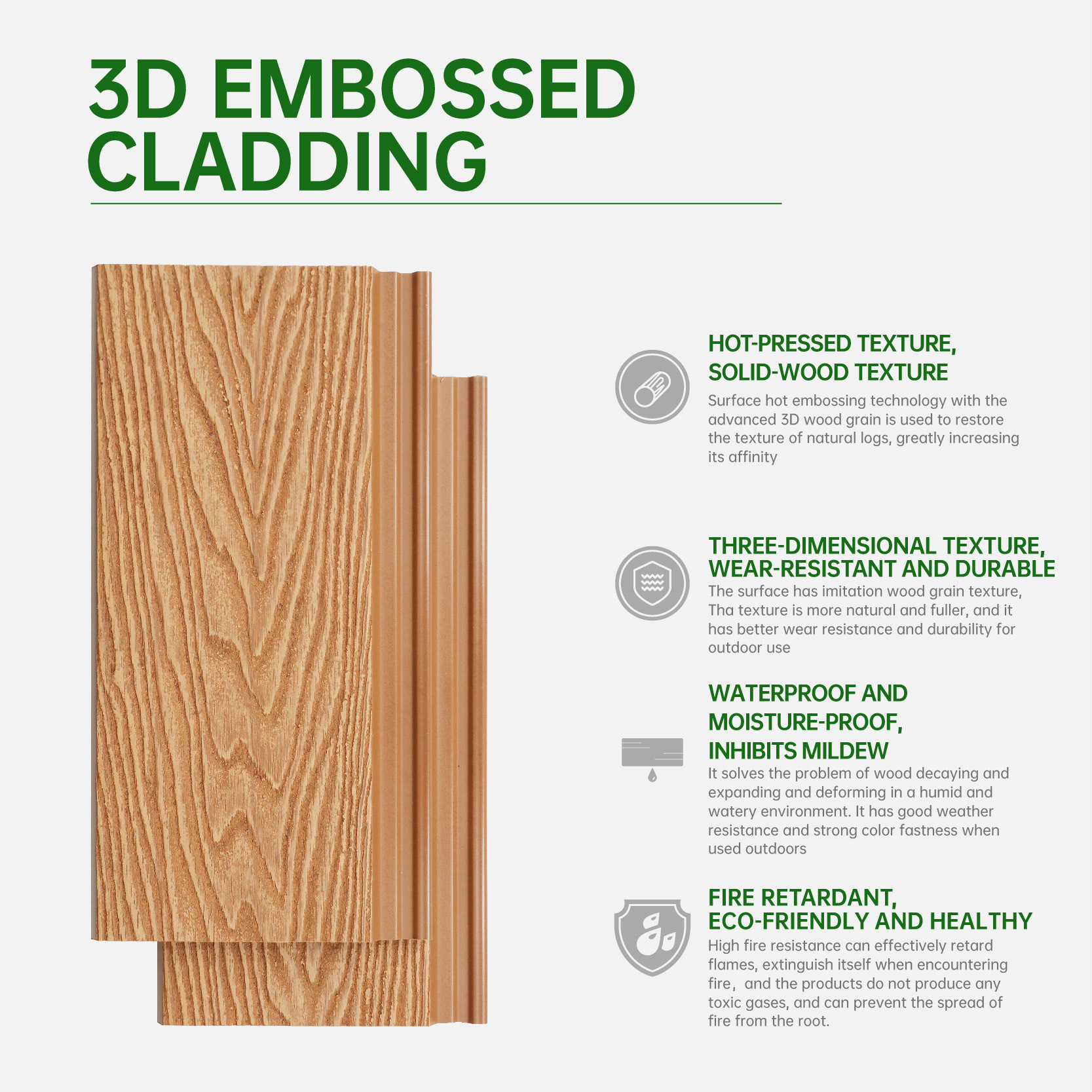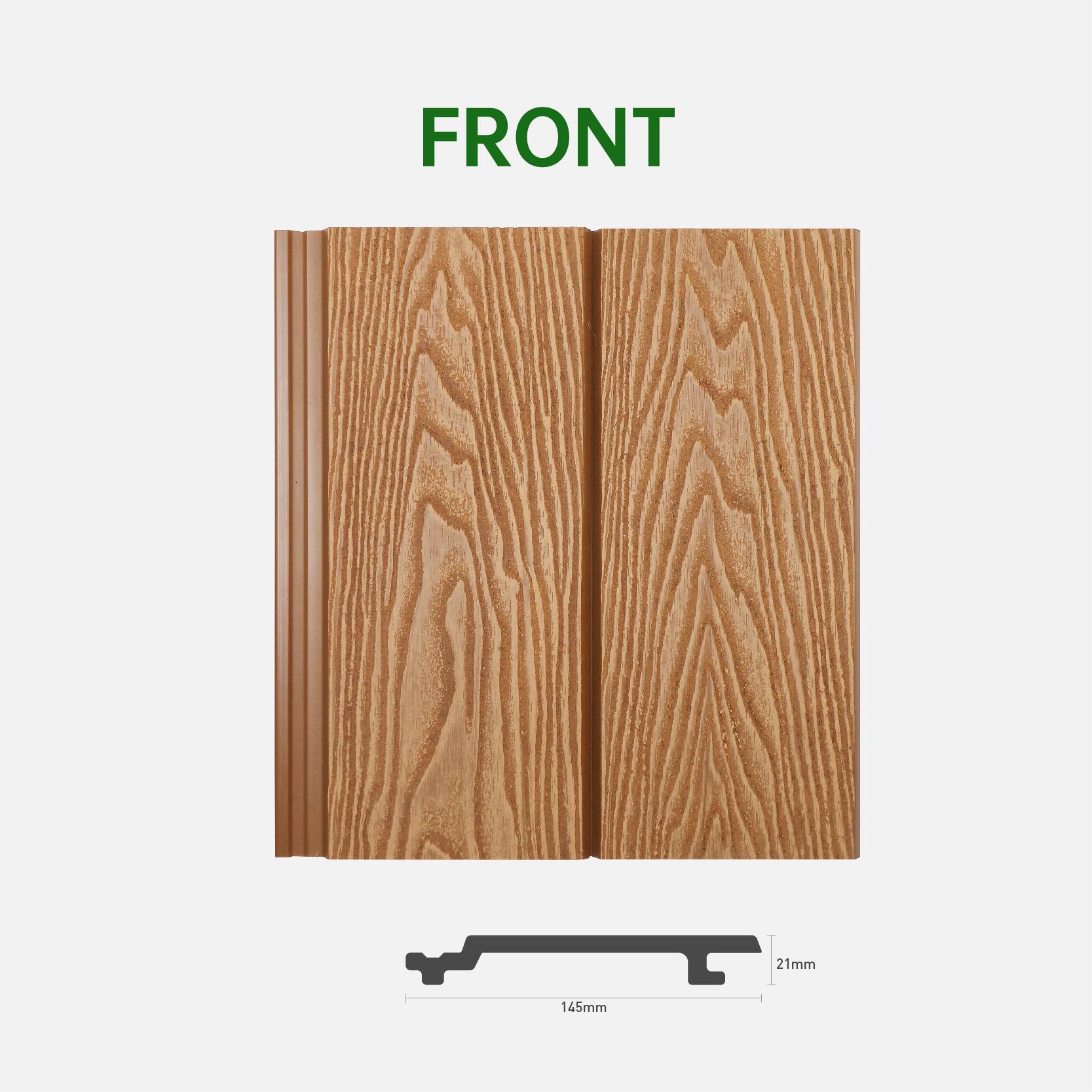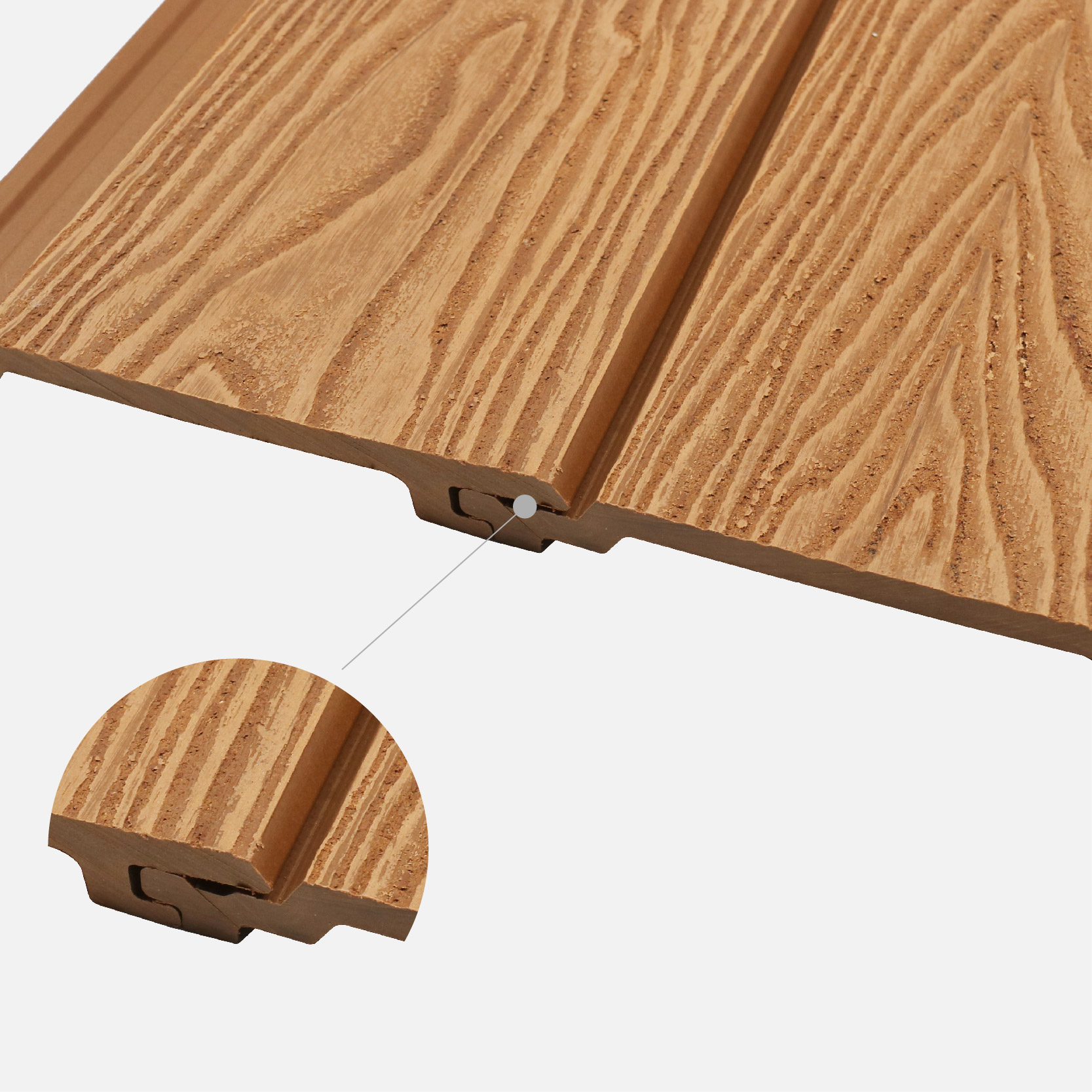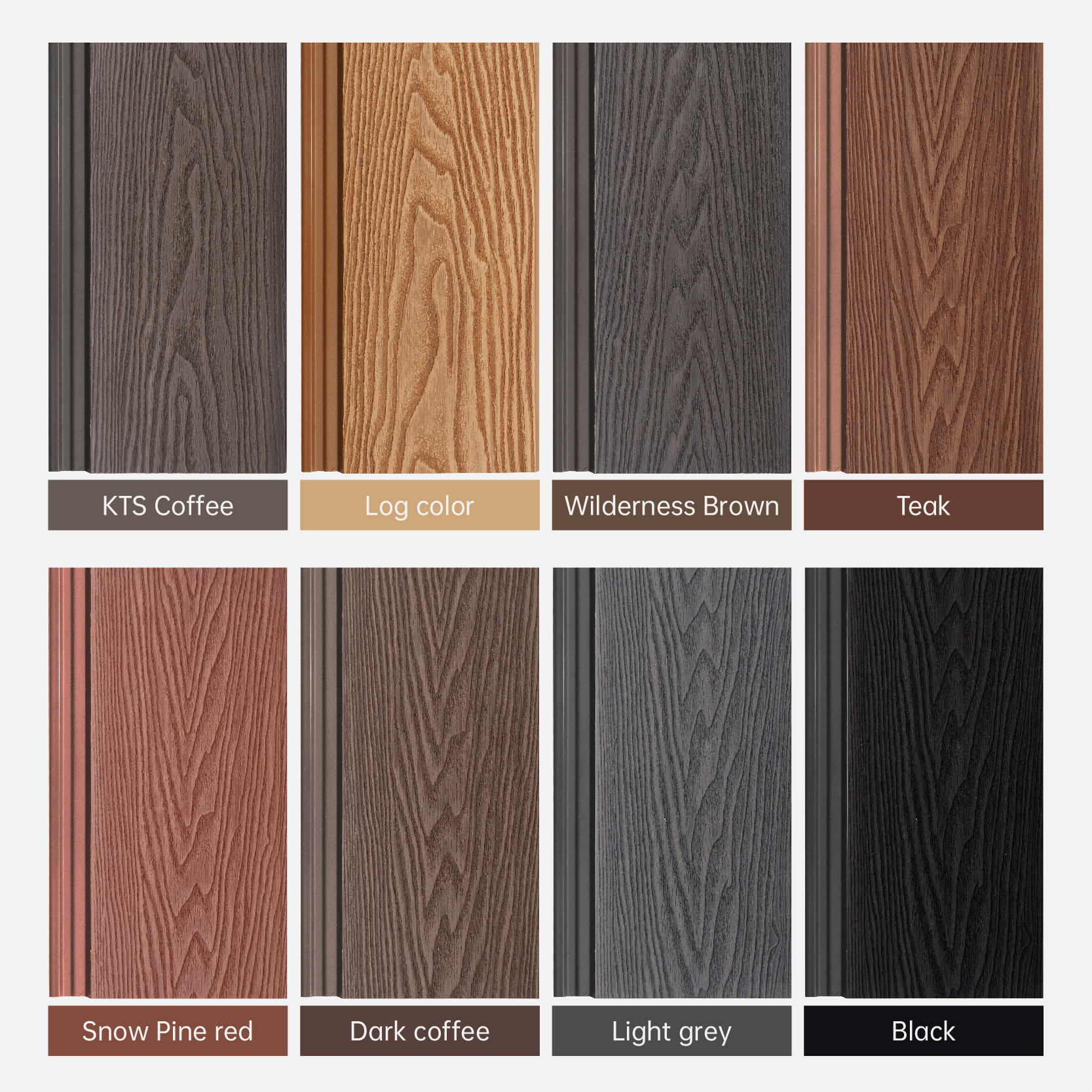Essential details
Shipping:Land freight, Ocean freight
Package Description:Timber + white film
Product Introduction
WPC Cladding – An Introduction to Wood-Plastic Composite Exterior Finishes
Overview
WPC (Wood-Plastic Composite) cladding is an innovative, eco-friendly exterior finishing material that combines the natural aesthetics of wood with the durability and low-maintenance benefits of plastic. It is widely used in architectural and landscaping projects for exterior wall coverings, offering a sustainable alternative to traditional materials like solid wood, brick, or vinyl siding.
Composition & Manufacturing
WPC cladding is primarily made from a blend of wood fibers and thermoplastic polymers (commonly polyethylene [PE]). Additives such as UV stabilizers, colorants, and anti-fungal agents are incorporated during the extrusion process to enhance performance. The raw materials are mixed, heated, and extruded into profiles with varied textures, colors, and dimensions, mimicking the look of natural wood grains or modern geometric patterns.
Key Features & Advantages
Overview
WPC (Wood-Plastic Composite) cladding is an innovative, eco-friendly exterior finishing material that combines the natural aesthetics of wood with the durability and low-maintenance benefits of plastic. It is widely used in architectural and landscaping projects for exterior wall coverings, offering a sustainable alternative to traditional materials like solid wood, brick, or vinyl siding.
Composition & Manufacturing
WPC cladding is primarily made from a blend of wood fibers and thermoplastic polymers (commonly polyethylene [PE]). Additives such as UV stabilizers, colorants, and anti-fungal agents are incorporated during the extrusion process to enhance performance. The raw materials are mixed, heated, and extruded into profiles with varied textures, colors, and dimensions, mimicking the look of natural wood grains or modern geometric patterns.
Key Features & Advantages
Weather Resistance:
Engineered to withstand extreme temperatures, humidity, and UV exposure without warping, cracking, or fading. Ideal for climates with high heat, heavy rain, or freeze-thaw cycles.
Low Maintenance:
Resists rot, mold, mildew, and insect infestations (thanks to the plastic component), eliminating the need for painting, sealing, or staining. Cleaning typically requires only soap and water.
Eco-Friendly:
Made frommaterials (wood and plastics), reducing landfill waste and reliance on virgin resources. Many manufacturers offer recyclable or biodegradable options.
Aesthetic Versatility:
Available in a wide range of colors, textures, and finishes to suit diverse architectural styles—from modern minimalist to rustic charm.
Durability & Longevity:
Does not splinter, rot, or corrode; maintains structural integrity for decades with minimal degradation.
Ease of Installation:
Lightweight and designed with clip-on systems, enabling faster, tool-free installation compared to traditional materials. Reduces labor costs and construction time.
Lightweight and designed with clip-on systems, enabling faster, tool-free installation compared to traditional materials. Reduces labor costs and construction time.
Applications
WPC cladding is versatile and used in:
Residential buildings (exteriors of houses, villas, apartments);
Commercial projects (hotels, offices, shopping malls);
Public infrastructure (parks, pavilions, bus stops);
Interior accent walls (where a wood-like texture is desired).
Commercial projects (hotels, offices, shopping malls);
Public infrastructure (parks, pavilions, bus stops);
Interior accent walls (where a wood-like texture is desired).
Considerations
While WPC cladding offers numerous benefits, it’s important to note:
While WPC cladding offers numerous benefits, it’s important to note:
Thermal Expansion: May expand or contract slightly with temperature changes; proper installation with expansion gaps is required.
Cost: Slightly higher upfront cost than basic vinyl siding but lower long-term expenses due to reduced maintenance and replacement needs.
Cost: Slightly higher upfront cost than basic vinyl siding but lower long-term expenses due to reduced maintenance and replacement needs.
Conclusion
WPC cladding represents a modern, sustainable solution for exterior wall finishes, balancing beauty, durability, and environmental responsibility. Its adaptability to various design needs and minimal upkeep requirements make it a preferred choice for architects, builders, and homeowners seeking long-lasting, eco-conscious materials.
WPC cladding represents a modern, sustainable solution for exterior wall finishes, balancing beauty, durability, and environmental responsibility. Its adaptability to various design needs and minimal upkeep requirements make it a preferred choice for architects, builders, and homeowners seeking long-lasting, eco-conscious materials.
Product details
